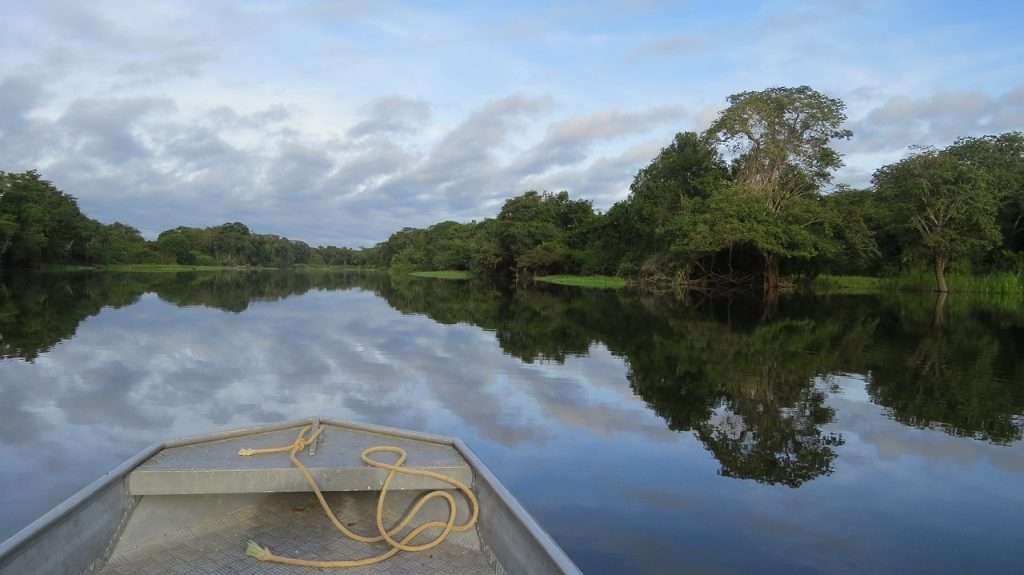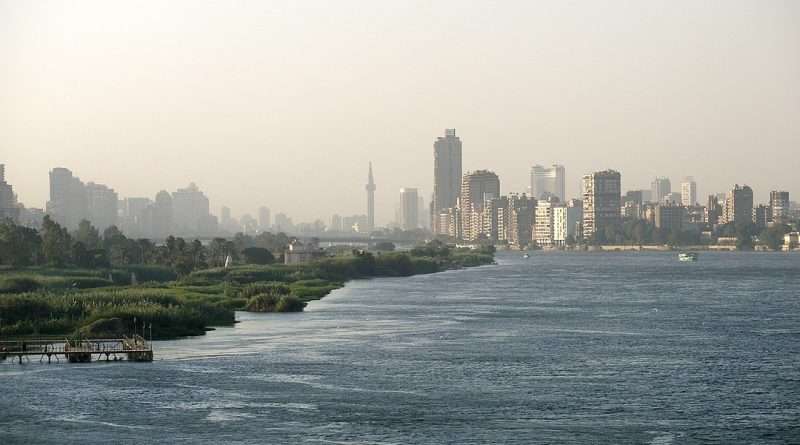Longest River in the World: The Nile
The Nile River is renowned as the longest river on Earth, spanning approximately 6,650 kilometers (4,130 miles) and traversing through 11 African countries, namely Ethiopia, Eritrea, Sudan, Uganda, Tanzania, Kenya, Rwanda, Burundi, Egypt, the Democratic Republic of the Congo, and South Sudan. It has a pivotal role in the regions it flows through, serving as a crucial source of water, supporting diverse ecosystems, and playing a central part in various historical and cultural narratives.
Geography
The Nile River flows northward, concluding its journey by draining into the Mediterranean Sea. The river’s basin spans across an area of about 3,349,000 square kilometers, making it an essential water source for the regions it traverses.
Hydrology
The Nile is composed of two major tributaries: the White Nile, considered the primary stream, and the Blue Nile, the source of most of the water and silt. The White Nile originates from Lake Victoria in Uganda, while the Blue Nile starts at Lake Tana in Ethiopia, with the two rivers meeting near Sudan’s capital, Khartoum.
History
The Nile has been central to civilization in Egypt since the Stone Age, with communities flourishing along its banks. Ancient branches and phases of the Nile, including the Giza pyramid complex’s adjacent branch and steps like the Eonile and the Paleonile, highlight it’s changing course over millions of years. The last ice age and subsequent climate changes influenced the Nile’s direction and the Sahara’s extent. The Nile’s numerous transformations include its connection to the Mediterranean, creating long canyons now buried under sediments, and its temporary merge with Lake Tanganyika, blocked later by volcanic activity.
The Nile was foundational in Egyptian civilization, fostering agriculture trade and contributing to religious and cultural development. It shaped the ancient Egyptian calendar and played a central role in mythologies and burial practices. European explorations in the 19th century, led by figures like Speke, unveiled the Nile’s sources. However, its upper reaches were long shrouded in mystery due to geographical challenges like the Sudd wetlands. Modern times saw the Nile’s continued use for transportation and agriculture, albeit altered by constructions like the Aswan Dam, with cities like Cairo remaining vital hubs along its course.
Economy and Use
Today, the Nile continues to serve as a vital resource for water agriculture and as a major transportation route. Various dams have been constructed along its course, including the famous Aswan High Dam in Egypt, aiming to control the river’s flow, generate hydroelectric power, and provide water for irrigation.
Ecology
The Nile supports a rich biodiversity, hosting various species of fish, birds, and other wildlife. However, like many of the world’s rivers, it faces threats from pollution, overuse, and climate change, necessitating concerted conservation efforts.
Modern Achievements in Nile River Exploration
In 1951, John Goddard, along with two French explorers, embarked on a groundbreaking expedition, becoming the first to navigate the entire Nile, a journey spanning approximately 6,800 km from its source in Burundi to its mouth on the Mediterranean, documented in “Kayaks down the Nile.” Meanwhile, the White Nile Expedition led by Hendrik Coetzee successfully navigated the White Nile’s full length of around 3,700 km, starting from Lake Victoria in January 2004 and reaching the Mediterranean four and a half months later. The Blue Nile Expedition saw Pasquale Scaturro and Gordon Brown complete an unprecedented descent of the entire Blue Nile, enduring a 114-day journey from Lake Tana to Alexandria. Following this, in January 2005, Les Jickling and Mark Tanner achieved the first human-powered transit of Ethiopia’s Blue Nile, a perilous five-month journey through conflict zones and regions notorious for banditry, showcasing the Nile’s enduring allure and challenge to modern explorers.

Top 10 Longest Rivers in the World
1. Nile River (Africa): 6,650 km (4,130 miles)
Flowing north through northeastern Africa, the Nile River is the longest in the world. It has two major tributaries: the White Nile, which originates in Lake Victoria, and the Blue Nile, beginning in Lake Tana. The Nile has been a vital source of life for civilizations along its banks for thousands of years, contributing significantly to the ancient Egyptian civilization.
2. Amazon River (South America): 6,575 km (4,086 miles)
The Amazon River, flowing in South America, is by volume the world’s largest river. It flows through the Amazon Rainforest, home to an incredibly diverse range of wildlife and plant species. The Amazon plays a crucial role in regulating the Earth’s climate as its forest acts as a significant carbon sink.
3. Yangtze River (China): 6,300 km (3,917 miles)
The Yangtze is the longest river in Asia and the third-longest in the world. Flowing entirely within China, it has been the cradle of Chinese civilization and is vital for agriculture, industry, and transport in the region.
4. Mississippi-Missouri River System (USA): 6,275 km (3,902 miles)
This river system comprises the Mississippi River and its tributary, the Missouri River, forming the world’s fourth-longest river system. It is a major North American waterway vital for transportation, agriculture, and industry.
5. Yenisei River (Russia): 5,539 km (3,442 miles)
Flowing through Siberia, the Yenisei is the most extensive river system flowing into the Arctic Ocean. It is a crucial waterway for the vast, sparsely populated regions of Siberia.
6. Yellow River (China): 5,464 km (3,395 miles)
Also known as Huang He, the Yellow River is the second-longest river in China. It is called the “Mother River of China” and was the birthplace of ancient Chinese civilization. However, it is also known for its frequent and devastating floods.
7. Ob River (Russia): 5,410 km (3,364 miles)
The Ob flows through western Siberia, Russia, and is known for its length and the vast Siberian basin that it drains. It is an essential waterway for the regions through which it flows.
8. Parana River (South America): 4,880 km (3,032 miles)
The Parana River flows through South America, running through Brazil, Paraguay, and Argentina. It is a crucial part of the waterway network in the region and is vital for transportation and hydroelectric power.
9. Congo River (Africa): 4,700 km (2,922 miles)
The Congo River is the second-longest river in Africa and has the second-largest flow in the world after the Amazon. It flows through the Congo rainforest, the second-largest rainforest in the world, and is vital for transportation in the region.
10. Amur River (Asia): 4,480 km (2,784 miles)
Forming the border between Russia and China, the Amur River is one of the major rivers of the Northeast Asian region. It is home to a variety of fish species and is crucial for transportation and as a natural boundary.
Frequently Asked Questions (FAQs)
Q1. Which is the longest river in the world?
Ans: The Nile River is the longest river in the world, stretching 6,650 km (4,130 miles).
Q2. Which is the largest river in the world by volume?
Ans: The Amazon River is the largest river in the world by discharge volume of water.
Q3. What is the longest river in Asia?
Ans: The Yangtze River holds the title of the longest river in Asia.
Q4. Which river is the deepest in the world?
Ans: The Congo River is recognized as the deepest river on Earth.
Q5. Which river crosses the equator twice?
Ans: The Congo River crosses the equator twice along its course.

